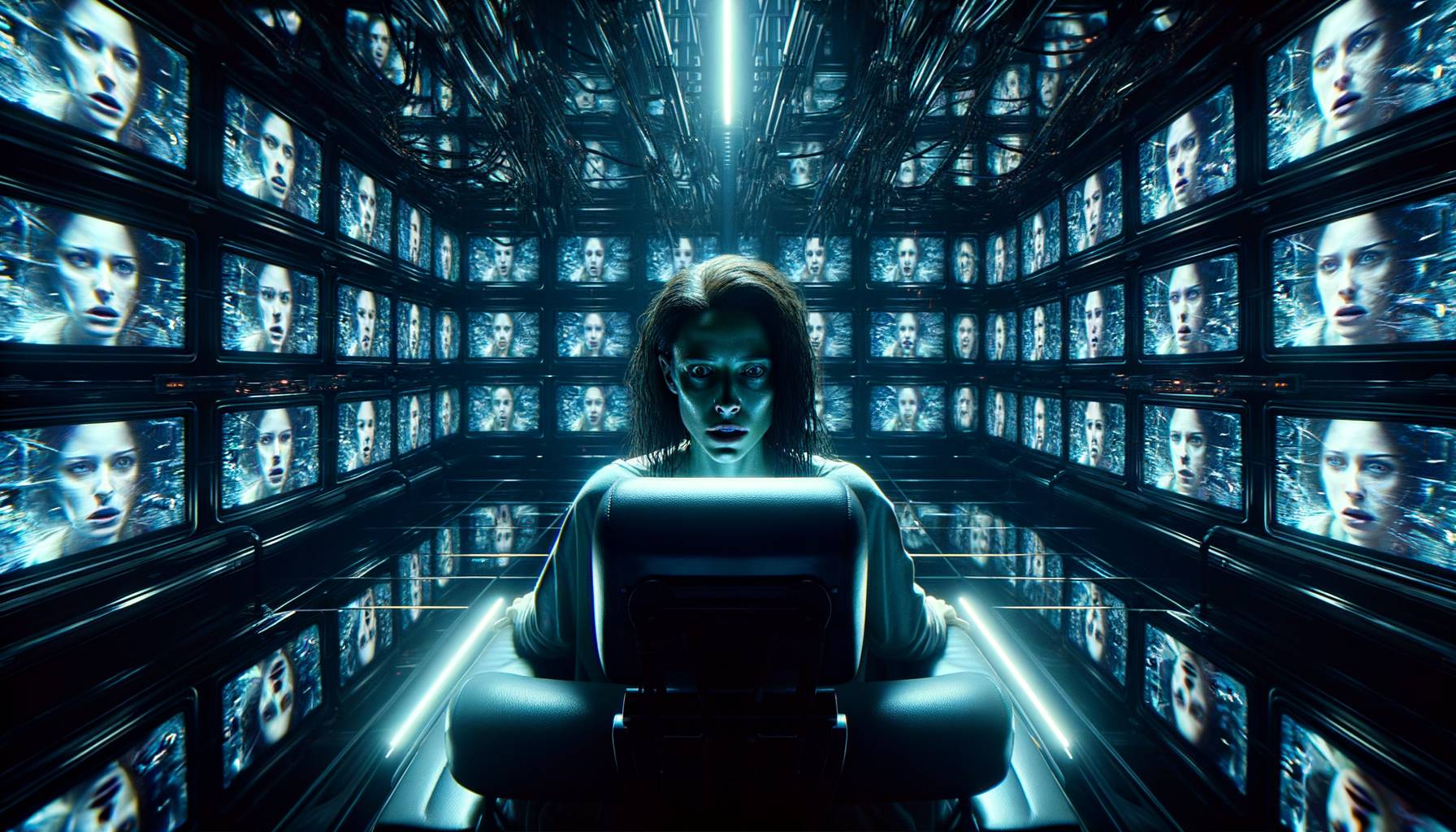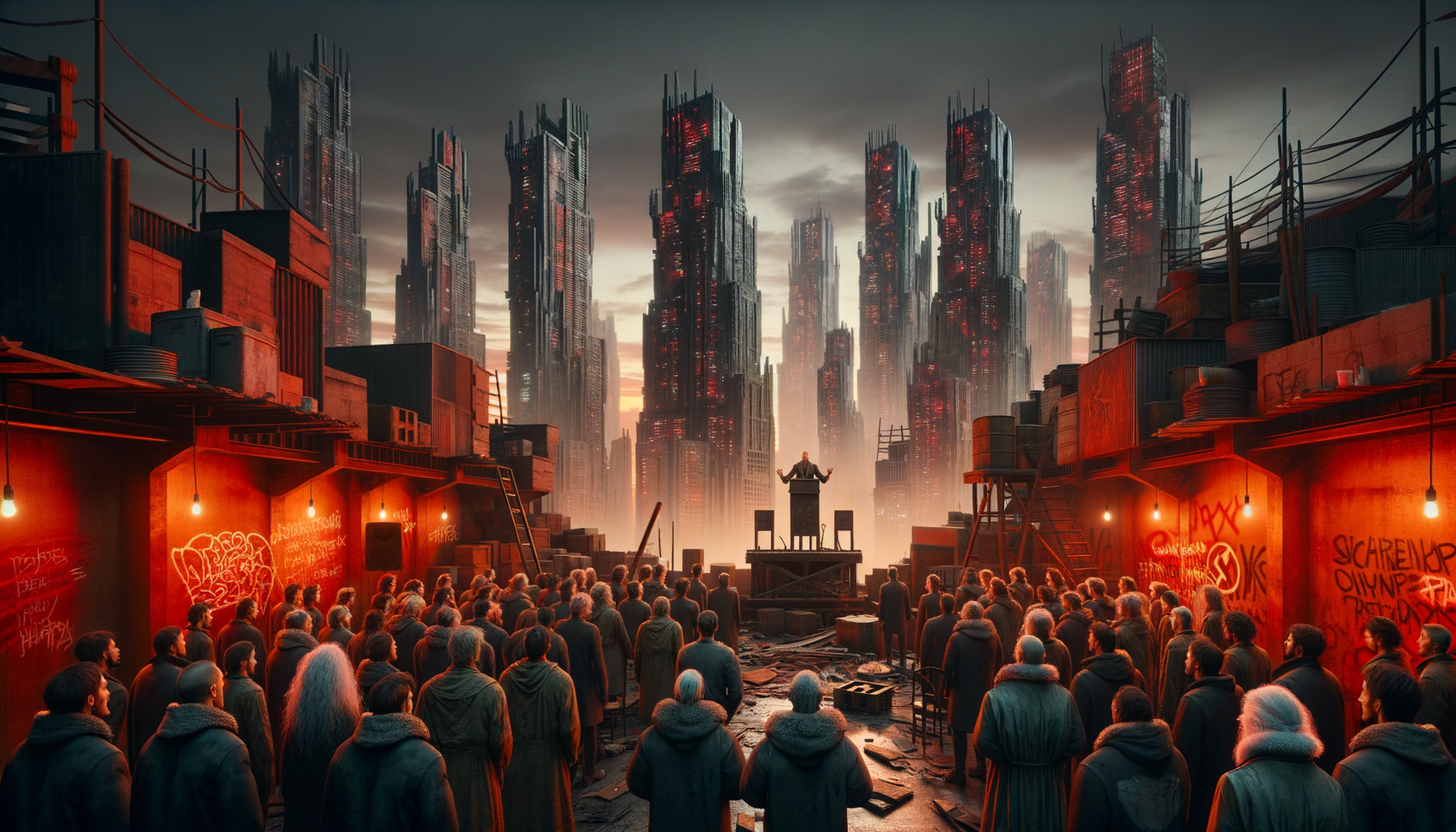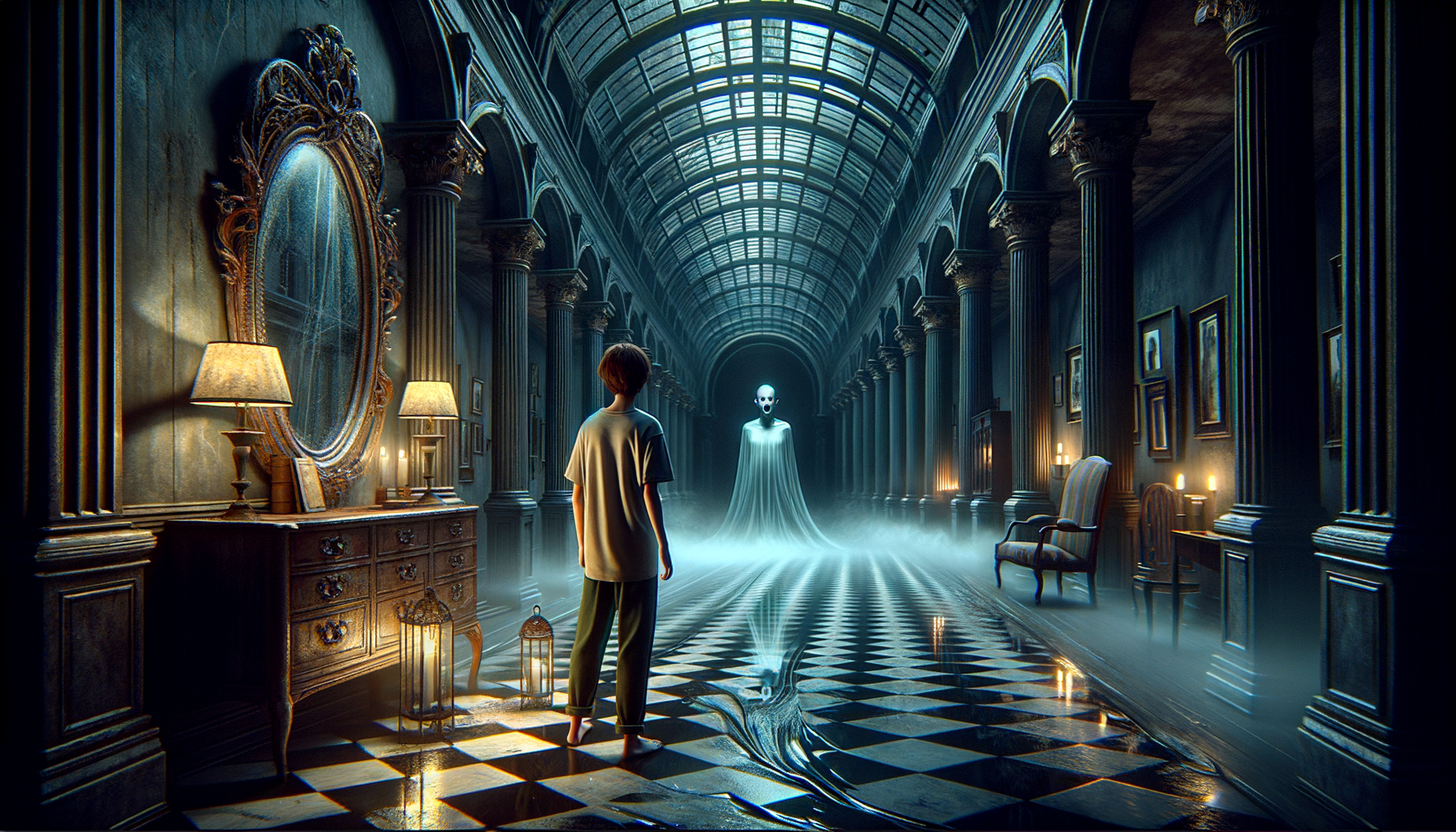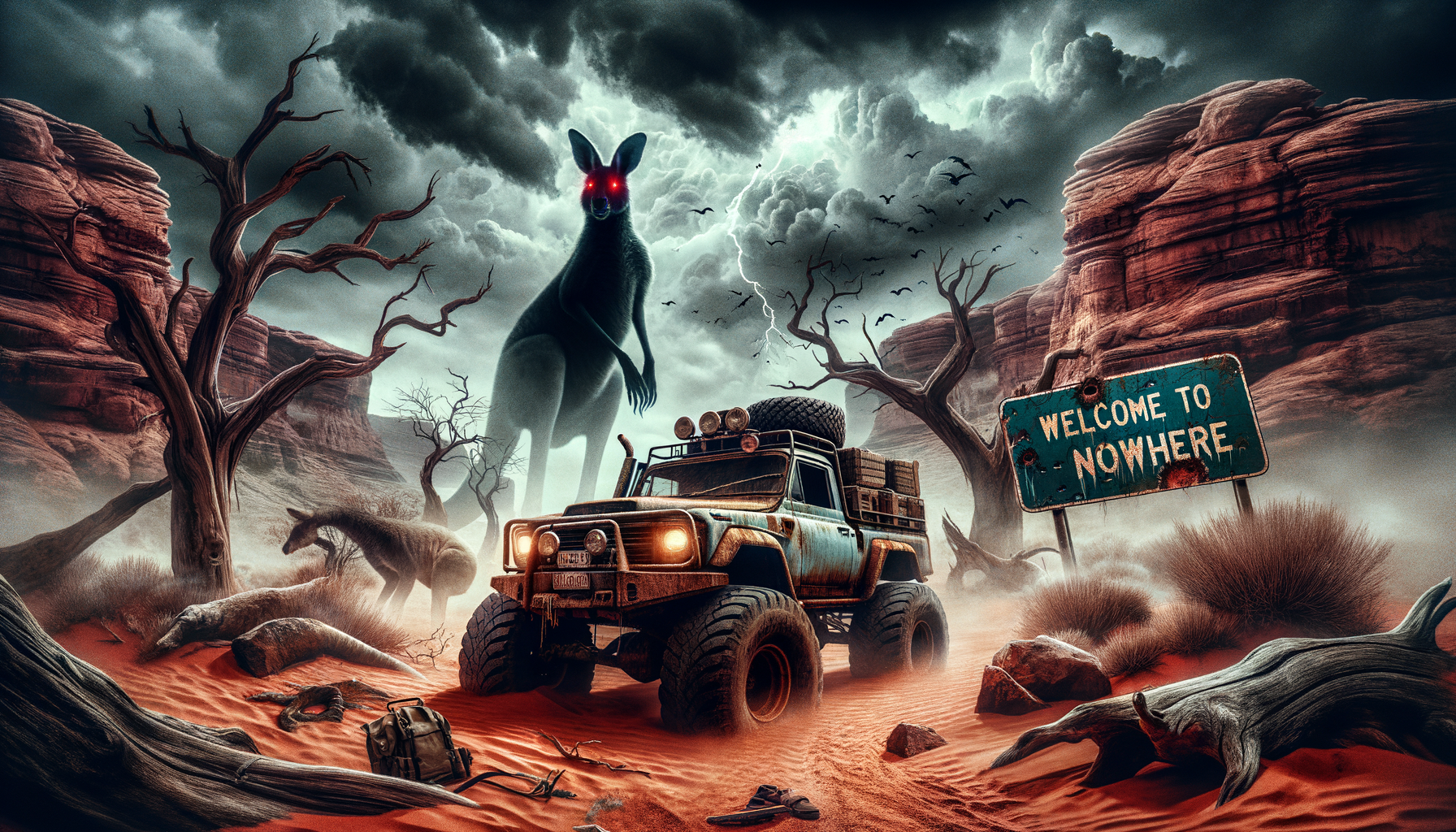Ever watched an episode of Black Mirror and felt your heart race, leaving you questioning reality and society? You’re not alone! Black Mirror has etched its mark as a defining piece of psychological horror. By blending speculative fiction with chillingly plausible realities, Charlie Brooker’s series has captivated and haunted viewers worldwide. Let’s plunge into the dark, twisted world of Black Mirror and understand what makes it a timeless psychological horror masterpiece!
The Evolution of Black Mirror: From Sci-Fi to Psychological Horror
When Black Mirror first aired, it was largely perceived as a modern-day Twilight Zone, rooted deeply in speculative science fiction. Initially, the series focused on the potential consequences of advanced technology and its impact on society. However, over the years, Black Mirror has evolved, shifting from traditional sci-fi themes to more nuanced psychological horror elements.
Charlie Brooker, the mastermind behind the series, has always been adept at tapping into contemporary fears. His vision has gradually steered the show from speculative tech scenarios to intricate explorations of the human psyche. This evolution reflects a deeper dive into the darker aspects of human nature, making the horror more personal and unsettling.
Key Episodes That Define Psychological Horror
Several episodes stand out for their psychological horror, effectively blending tension, fear, and introspection.
“White Bear”
In “White Bear,” we follow a woman who wakes up with no memory, only to find herself hunted by masked strangers while bystanders record her suffering. The episode’s relentless pace and the protagonist’s mounting desperation create a suffocating atmosphere of dread.
“Playtest”
“Playtest” explores the terrifying potential of virtual reality. The protagonist undergoes a game test that blurs the line between reality and nightmare. Specific scenes, such as the appearance of grotesque hallucinations, ramp up the psychological tension, leaving viewers questioning their own perception of reality.
“Black Museum”
“Black Museum” is a collection of macabre stories linked by a museum of criminal artifacts. Each story delves into the darkest corners of human nature, with elements like the pain-sharing technology and the digital consciousness of a convict creating a deeply unsettling experience.
These episodes stand out in the psychological horror genre because they go beyond mere scares, delving into the human mind’s vulnerabilities and fears.
Themes of Dystopia and Human Psyche
Black Mirror recurrently explores themes that resonate with our real-world anxieties, such as surveillance, loss of identity, and societal collapse.
Surveillance
Episodes like “Nosedive” and “Arkangel” tackle the invasive nature of surveillance, reflecting our growing concerns about privacy in the digital age.
Loss of Identity
Themes of identity and self are prevalent in episodes like “White Christmas,” where characters lose themselves to technology, mirroring fears of losing individuality in a hyper-connected world.
Societal Collapse
Societal breakdown is another recurring theme, notably in “Fifteen Million Merits,” which presents a dystopian future driven by consumerism and superficiality. These themes are not just fictional constructs but echo real psychological theories on how technology and society shape our mental state.
Character Arcs: Psychological Descent and Transformation
The series excels in portraying characters’ psychological journeys, often leading to their descent or transformation.
“Shut Up and Dance”
In “Shut Up and Dance,” we witness a young man’s harrowing ordeal as he is blackmailed into committing criminal acts. His psychological breakdown is palpable, and the emotional impact on viewers is profound.
“Nosedive”
“Nosedive” follows a woman obsessed with her social rating, leading to her eventual breakdown. Her transformation from a cheerful, people-pleaser to a desperate, isolated individual highlights the mental deterioration caused by societal pressures.
These character arcs are meticulously crafted to evoke empathy and unease, making viewers reflect on their own vulnerabilities.
Cinematic Techniques Enhancing the Horror Experience
The show’s use of cinematic techniques significantly enhances its psychological horror.
Cinematography
The series often employs dark color palettes and close-up shots to create a claustrophobic atmosphere. For instance, the dimly lit scenes in “White Bear” amplify the sense of confusion and fear.
Sound Design
Unsettling music and abrupt cuts are signature elements that contribute to the tension. In “Playtest,” the sound design plays a crucial role in blurring the lines between reality and hallucination.
Special Effects
Special effects are used sparingly but effectively, ensuring that the focus remains on psychological tension rather than visual spectacle. These techniques collectively amplify the horror, making it deeply personal and affecting.
Cultural Impact and Viewer Reactions
Black Mirror has left an indelible mark on popular culture, earning critical acclaim and a dedicated fanbase.
Viewer testimonials often highlight the show’s ability to provoke thought and evoke strong emotional reactions. Critics have praised its innovative storytelling and its unflinching look at contemporary issues.
The series has also influenced other media in the psychological horror genre, inspiring creators to explore similar themes and techniques.
Behind the Scenes: The Making of Dark Realities
Creating the dark realities of Black Mirror is no small feat. The production process involves a meticulous attention to detail, ensuring each episode’s world feels both believable and unsettling.
Interviews with creators like Charlie Brooker reveal the inspiration behind the episodes and the challenges faced during production. Brooker often discusses the real-world anxieties that inform the show’s themes, providing a deeper understanding of its impact.
The creative team’s dedication to crafting believable dystopias is evident in every aspect of the show, from the writing to the visual design, making Black Mirror a standout in the realm of psychological horror.
Conclusion
From its chilling depictions of dystopian futures to its deep dives into the human psyche, Black Mirror stands unmatched in the realm of psychological horror. As we continue to navigate an increasingly digital and unpredictable world, the series serves as a haunting mirror, reflecting our deepest fears and most profound moral dilemmas. Ready to re-watch with a new perspective? Join the conversation and share your most unsettling Black Mirror moments. Remember, in the world of Black Mirror, every click, swipe, and view counts!




